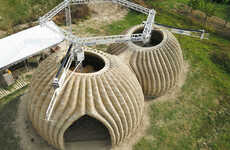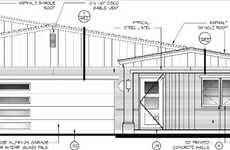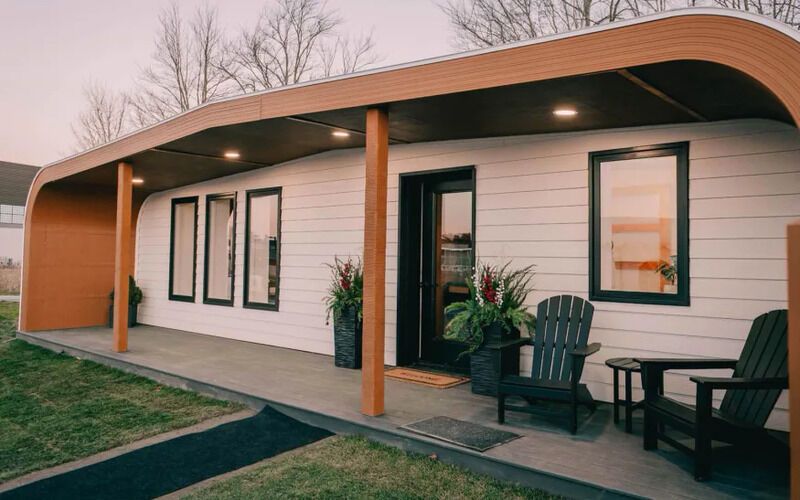
The BioHome3D is Constructed from Sustainable Materials
Amy Duong — November 25, 2022 — Art & Design
References: engadget
The researchers at the University of Maine have seemingly developed a solution to the rising issue of housing shortages in the United States with the new BioHome3D. Using one of the largest 3D printers in the world, the ASCC (Advanced Structures and Composites) developed the first-ever home that is made from 3D-printed materials. The prototype home measures out to be 600-square-foot.
The walls, floors, and roof are all made from 3D-printed materials that are drawn from sustainably sourced wood fibers along with other biological resins. The house is notably entirely recyclable and will require weeks or months of the time of on-site construction time to properly and safely assemble. It prints out four modules and will require an electrician for two hours to wire the home.
Image Credit: University of Maine
The walls, floors, and roof are all made from 3D-printed materials that are drawn from sustainably sourced wood fibers along with other biological resins. The house is notably entirely recyclable and will require weeks or months of the time of on-site construction time to properly and safely assemble. It prints out four modules and will require an electrician for two hours to wire the home.
Image Credit: University of Maine
Trend Themes
1. Sustainable 3D Printing - Innovations in 3D-printing technology that utilize recycled or sustainable materials are disrupting the construction industry by providing a cost-efficient and eco-friendly alternative to traditional building methods.
2. Modular Housing - The prevalence of 3D-printed modular homes is proving to be a game-changer for the housing industry, as it allows for more efficient and cost-effective production of customizable dwellings that can be quickly assembled on-site.
3. Recyclable Architecture - The development of recyclable 3D-printed homes, such as the BioHome3D, highlight a growing trend in the architecture industry towards environmentally-friendly building materials that minimize waste and carbon emissions.
Industry Implications
1. Construction - The construction industry can benefit from incorporating innovative 3D-printing technology for building materials that are cost-efficient, sustainable, and customizable.
2. Real Estate - The real estate industry can leverage 3D-printing technology to provide sustainable housing solutions that appeal to environmentally-conscious buyers, while also offering the potential for faster and more flexible construction timelines.
3. Environmental Sustainability - 3D-printed homes made from recycled and sustainable materials provide a disruptive innovation opportunity for industries across the board to promote environmental sustainability and reduce waste in all facets of production and construction.
6.9
Score
Popularity
Activity
Freshness























